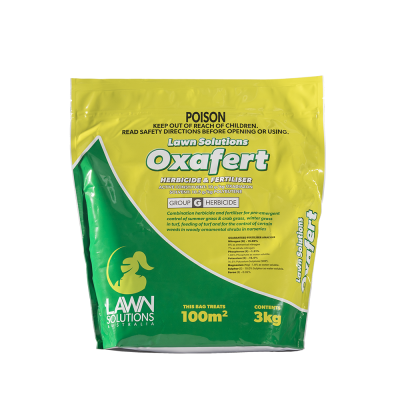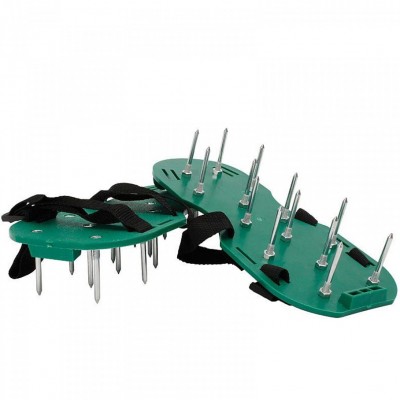Keith McAuliffe, Managing Director Labosport Australia
The 2023 FIFA Women’s World Cup, jointly hosted by New Zealand and Australia was a resounding success for FIFA and football (soccer). The month-long Tournament was deemed by FIFA’s President, Gianni Infantino, to be the most successful Women’s Tournament yet, with match attendance figures and merchandise figures toppling expectations.
For a Tournament like the Women’s World Cup, there is a requirement for the playing surfaces to be of the highest quality. Visiting teams from around the world now come to expect the surface, both for match-play and training, to be world-class.
This was the task facing Labosport’s Australian staff, who were commissioned by FIFA’s Pitches Overseer, Alan Ferguson, to ensure top-quality pitches across Australia (the same challenge was faced by Labosport’s New Zealand arm, the NZ Sports Turf Institute with venues in that country).
There were several challenges with this World Cup that would not normally arise, namely:
- The Tournament was held across a wide geographic and climate band, from the sub-tropical zone of Queensland to the cool season zones of the southern parts of NZ and Australia. Turf maintenance programs had to be customised for each region, and there was definitely no “one size fits all” approach.
- The Tournament was held in mid-winter, unlike most FIFA tournaments to date. This meant having to contend with poor growth/recovery during the Tournament and the greater likelihood of weather interference.
- Most venues were required for club usage in the months leading up to the Tournament, with only a few weeks scheduled for rest and recovery before tournament use.
- Several venues were multi-use and often subjected to intensive use. This was particularly applicable to the major venues, such as Brisbane and Sydney Football Stadiums.
- Playing surfaces were largely warm-season grass surfaces, which needed to be over-seeded with perennial ryegrass prior to the Tournament.
Our work officially got underway in August 2021, with visits to all potential match and training venues. Approximately 70 venues were inspected and tested in Australia alone. Each venue was thoroughly assessed using Labosport’s Scoreplay system, with the resulting reports highlighting both current performance and any identified risks associated with the venue. This information was then used by the Cup Organising Committee to help derive a short list of training venues.
After the initial inspection, Labosport was requested by FIFA to provide periodic visits to each venue to monitor performance and progress and to help derive plans to mitigate any risks associated with the venue. Poor drainage with resulting waterlogging was an obvious risk with many of the venues, which generally required more frequent deep soil aeration.
Visit frequency was intensified as we got closer to the Tournament, with FIFA requesting monthly visits to all venues in the latter few months. This frequency of visits certainly allowed us to build up a detailed database on the performance of each venue.
From the outset, we derived a set of playing performance targets for the Tournament, and we reported against these targets with each visit. It was rewarding to see the progress made and the interest shown by Turf Managers in the database produced.
Looking at the Tournament overall, and what we felt were determinants of a successful pitch, several key points come to mind. These are outlined below.
Starting early to ensure optimal turf performance by the start of the (2023) football season
To ensure the turf cover was dense and robust going into the 2023 season we needed to plan a full 12+ months ahead. Venues went through a planned and customised 2022 spring renovation. In a couple of cases, this involved re-surfacing and/or drainage work. In other cases, work was confined to more intensive renovation, with soil aeration and a levelling/topdressing program.
Controlling Usage During the Football Season
Clubs were requested by FIFA to regulate usage, in particular training, in the lead-up to the Tournament. This was a big ask and meant clubs had to limit usage (particularly training) throughout the season since any damage done going into winter would be hard to repair in time for the Tournament.
That only a couple of venues needed to re-turf high-wear zones with instant-play turf was impressive, and clubs must be commended on the usage control strategies employed. Keeping training out of goal boxes (where possible) and adjusting field widths (where ground dimensions allowed) were two of the more effective strategies used.
Over-seeding
It was a requirement for all venues to be perennial ryegrass for the Tournament. Some of our venues were ryegrass, to begin with, but most needed to be over-seeded. Timing of the over-seeding varied, depending on usage program and climate. In most cases, over-seeding was done mid-late autumn, with many clubs allowing a decent window to get young ryegrass strong before re-use. Again, there were exceptions to this, with the likes of Brisbane Stadium and Sydney Football Stadium having no decent break in usage to get ryegrass mature.
Over-seeding was something new at several venues. Furthermore, heavier-than-normal rates of ryegrass were required to get the density of grass desired by FIFA. The challenge now is to transition back to the primary, warm-season grass base. If delayed too long the shading from the ryegrass will have a damaging effect on the warm-season grass, with a carryover into next season. Transitioning is currently underway at venues in Brisbane and Sydney.
Resourcing and Training
Many of the selected venues are traditionally managed throughout the season with limited resources, often using club volunteers. Our initial visits helped identify venues where extra resourcing was required to minimise risk and to help ensure a top-class surface. In several cases experienced local contractors were called on to assist with turf management in the lead-up to the Tournament.
Mention must also be made of the FIFA Pitch Workshops, conducted by FIFA’s Alan Ferguson. These workshops definitely made a difference, in particular by spelling out the quality expectations required for the Tournament.

Playing Surface Standards and Benchmarking
Performance testing was carried out from the outset of venue inspections. Each venue was performance tested on multiple occasions (monthly as the Tournament neared). This frequent testing enabled tracking or benchmarking of key performance parameters, such as infiltration rate, surface hardness and traction. Turf Managers at each venue could identify how they were tracking against recommended targets, and FIFA management was provided with objective data for assessing and reporting. It was our intention to get all training venues to perform as close to the match venues as possible. Furthermore, we wanted to have venues across all states (and countries) perform similarly.
Tests used and properties measured during visits included: lightweight rotational traction device for surface stability; Clegg impact tester for surface hardness; straight edge for levelness; NDVI for turf health and colour; root zone sampling for rooting depth and soil health; infiltrometer for infiltration rate; floating disk for effective height of cut; Advanced Artificial Athlete for shock absorption and vertical deformation; Inclined plane for ball roll distance and vertical ball drop for ball rebound height. Each test result was given a score (1-4) based on the international database developed by Labosport, with an overall total score given for the playing surface that reflected the measured quality on the day of testing.
The End Result
Most of our venues have never looked and performed as well as they did during the Tournament, which is a tribute to the efforts made by many, in particular the clubs and councils that participated. It will be interesting to see whether the same commitment to achieving a quality playing surface is extended into the next and following seasons.
Working on the Women’s World Cup project, alongside many of our leading Turf Managers and contractors, has been a rewarding experience for Labosport’s Australian staff. The progress made with pitch quality over the past couple of years has been very noticeable, and I feel our industry can be proud of what has been achieved. The quality of the playing surfaces would undoubtedly be one of the highlights of the Tournament.


